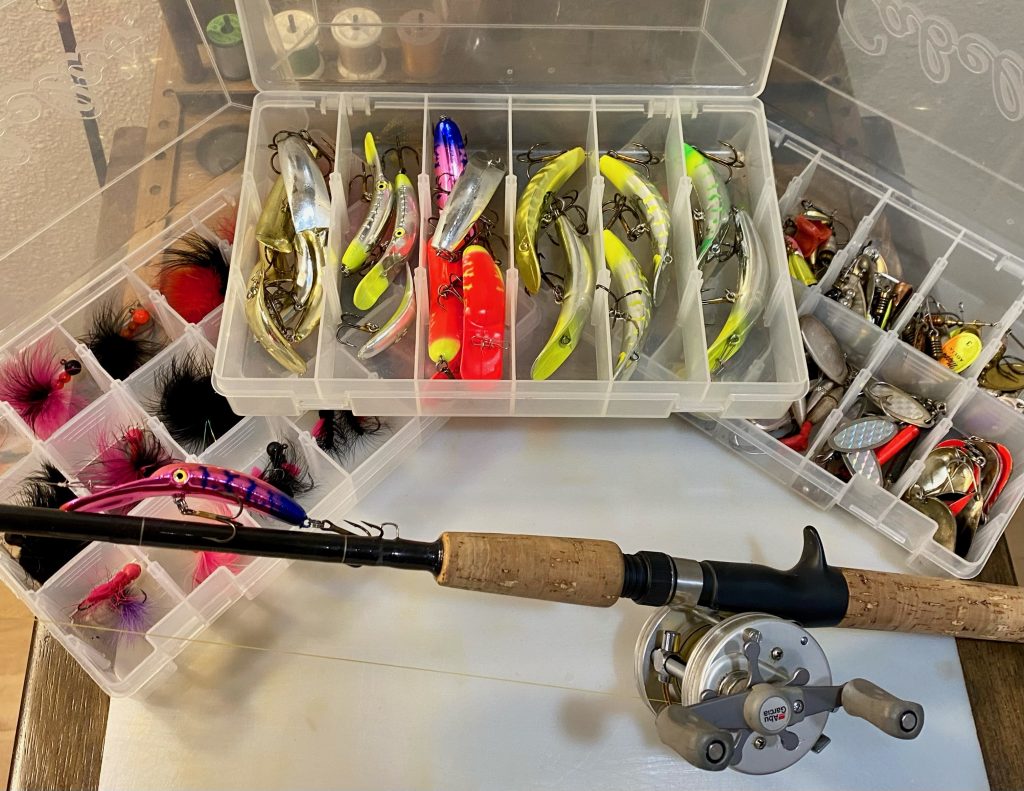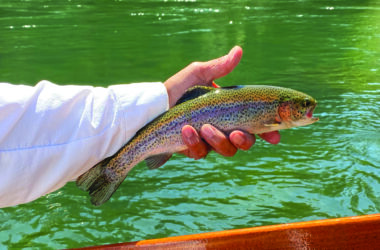With the largest part of the energy going into California, a recent series of storms slammed into the West Coast, bringing gusty winds, heavy rain and some snow, but mostly rain to all the western states. To the good fortune of Oregonians we have for now escaped the catastrophic flooding that has stricken the Golden State. In comparison, storms carried along on the “atmospheric river” of precipitation have Beaver State rivers running high and in many cases off-colored. But our largest inconvenience is only that fishing opportunities for winter steelhead anglers are spotty and somewhat unpredictable.

Last weekend’s storm had a descending impact as it worked its way up the West Coast and from about the Siletz River northward fishing conditions were generally poor to fair. But anglers who focused on smaller and faster clearing streams or fished high in the drainages of the larger river were better rewarded for their efforts and often found good fishing conditions.
On the Alsea, in the bank fishing section of the North Fork, river levels and clarity were pretty good but diminished rapidly in the boating section below the confluence of Mill Creek. It was about the same on the Siuslaw, from Whittaker Creek to Asta boat ramp, as conditions were fair but quickly became poor as you traveled down river from Asta. Below the confluence of Lake Creek it was pretty much a bank fishing scene with plunkers in all the usual places.
South to the California border, do your research because fast-clearing rivers like the Elk River and Hunter Creek were in fine shape as I prepared this week’s Angler’s Log. But the larger rivers such as the Umpqua, Coquille, Rogue and Chetco were all running high and off-colored. Looking at hydrologic predictions, rivers from border to border will be in ideal conditions about the time my column reaches you.
Keep in mind, hydrological predictions extend out dependably for only two or three days. While meteorological forecasts have become increasingly dependable for as many as 10 days. Current forecasts strongly suggest conditions that have sustained the river will likely be with us for the balance of January, possibly shifting north and passing directly over Oregon as the month progresses.
The “bite” has been about as sporadic as encountering quality conditions. For anglers lucky enough to be on the river in one of those prime windows the fishing has been only fair this season. I suspect that in addition to fluctuating river levels, extremely rough ocean, beach and river bar conditions have also limited getting more steelhead into our coastal rivers.
One recent storm reached typhoon status and generated waves over 30 feet and what we know about steelhead is they are just not fans of a big surf. They are a patient fish, adapted to their environment over thousands of years. We know they prefer to wait offshore for milder river bar conditions and although I would like to be looking at a stronger winter run in mid-January, I think there are plenty of fish out there and only that the dynamic nature of winter steelhead fishing is fully on display this season.
Much less cerebral, always fun and most often close to home. … The ODFW launched its trout-stocking program for the 2023 season this week, planting hatchery-raised rainbow trout in about half-a-dozen locations in the Willamette Valley. Locally, 1,250 legal-sized and 75 oversized trout went into the Junction City pond in the northern part of Lane County. In a couple of weeks the stocking schedule will include Row River Nature Park in the southern portion of the county, where about 1,200 legals will be planted. Over in the western part of the county at Munsel Lake, 2,000 legal-sized and 150 oversized rainbows will be planted, followed shortly by Alton Baker Canal that is destined for a bounty of hatchery rainbows totaling about 2,200 fish. Trout stocking will ramp up dramatically through February and reach a peak by April. Current fishing conditions aside, the wet wintry weather is often the predictor of some quality summertime fishing. … The future looks bright for anglers.
A note to my readers: I had intended to share an interview with Jeff Ziller, the ODFW Southern Willamette District manager, regarding what could be the potential effects to the Leaburg fish hatchery now that Leaburg Dam will eventually be removed. Family obligations for both Ziller and myself took priority and I will have that interview in an upcoming edition of The Chronicle. Lastly, links to the fish stocking schedule, ODFW news and other detailed information are always posted on my Facebook Page, Sunrise in the Outdoors.







